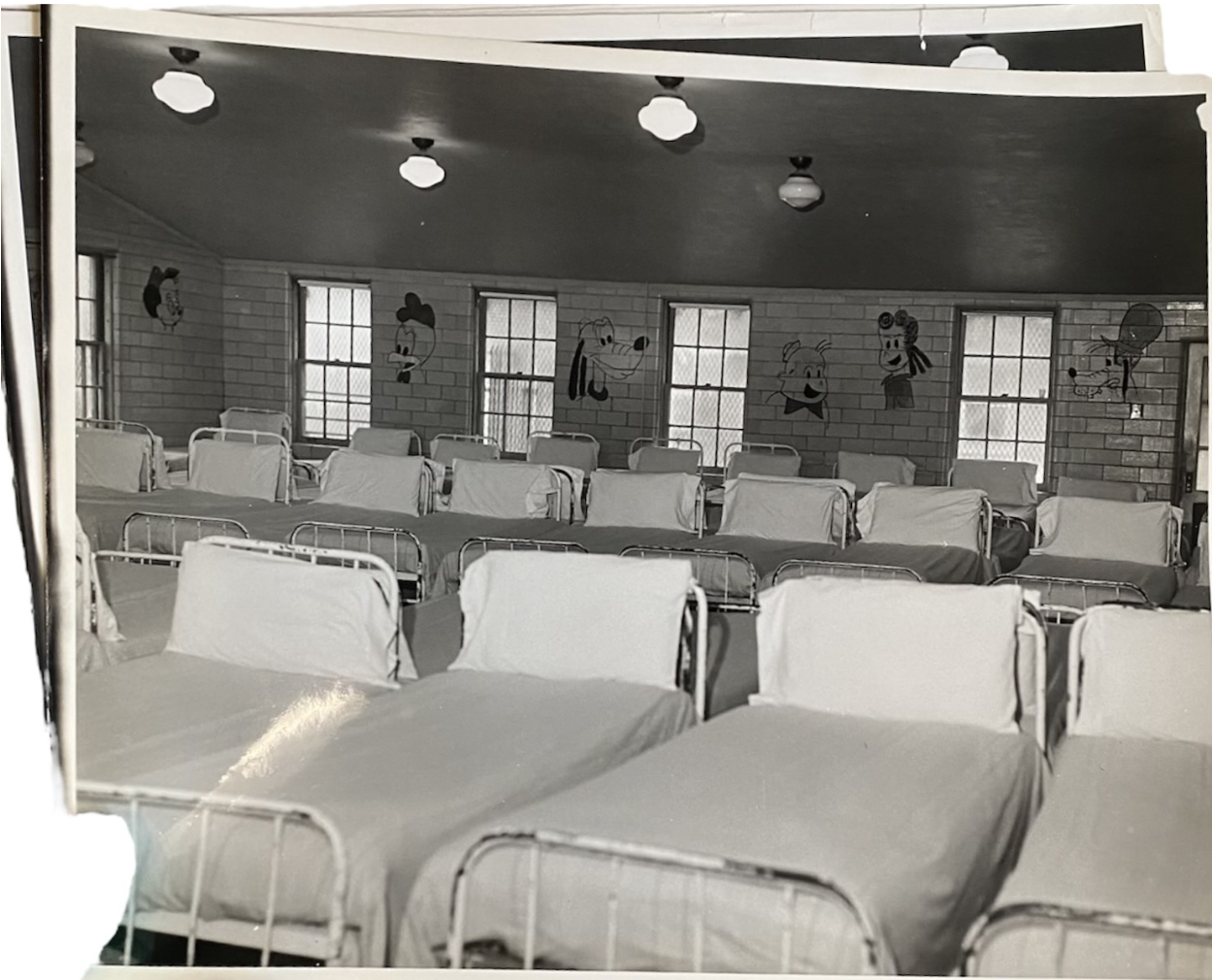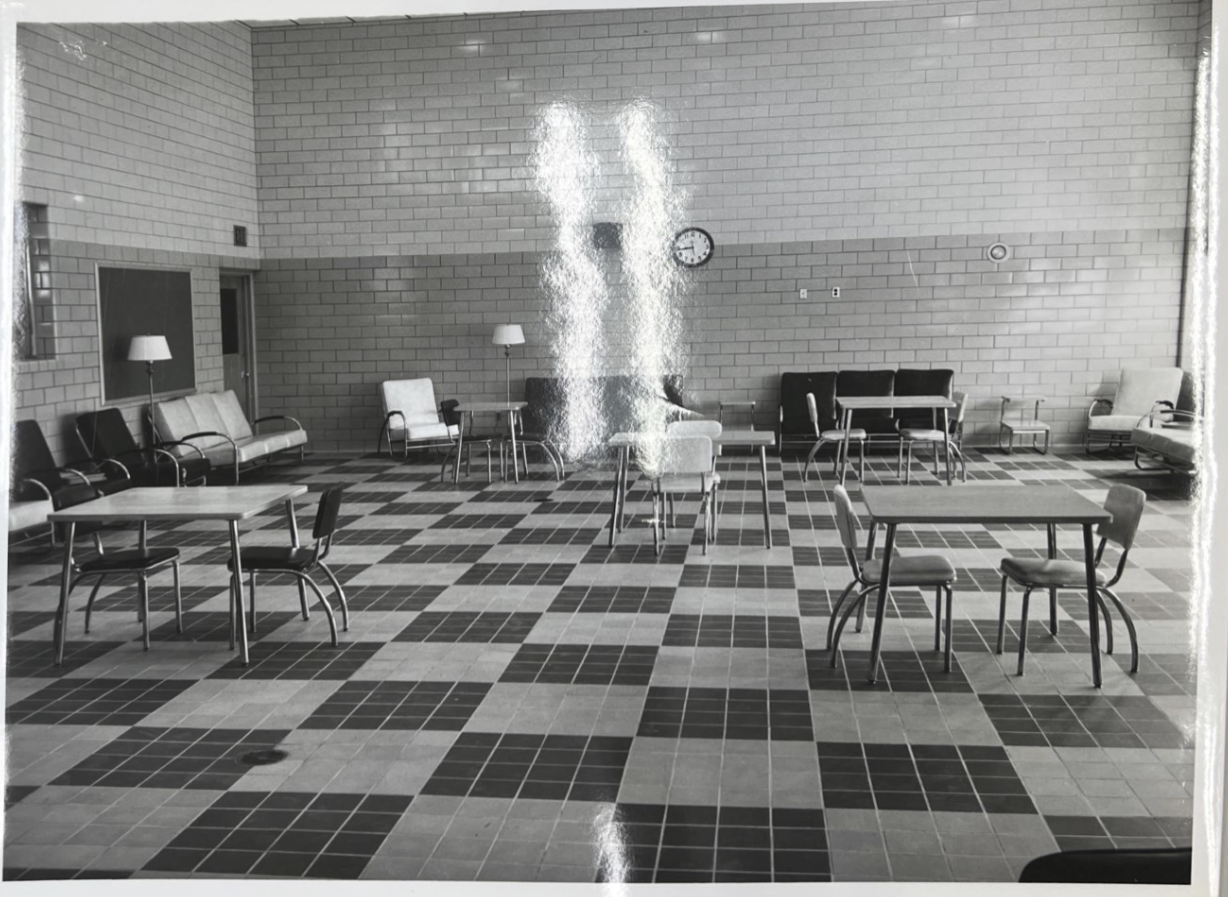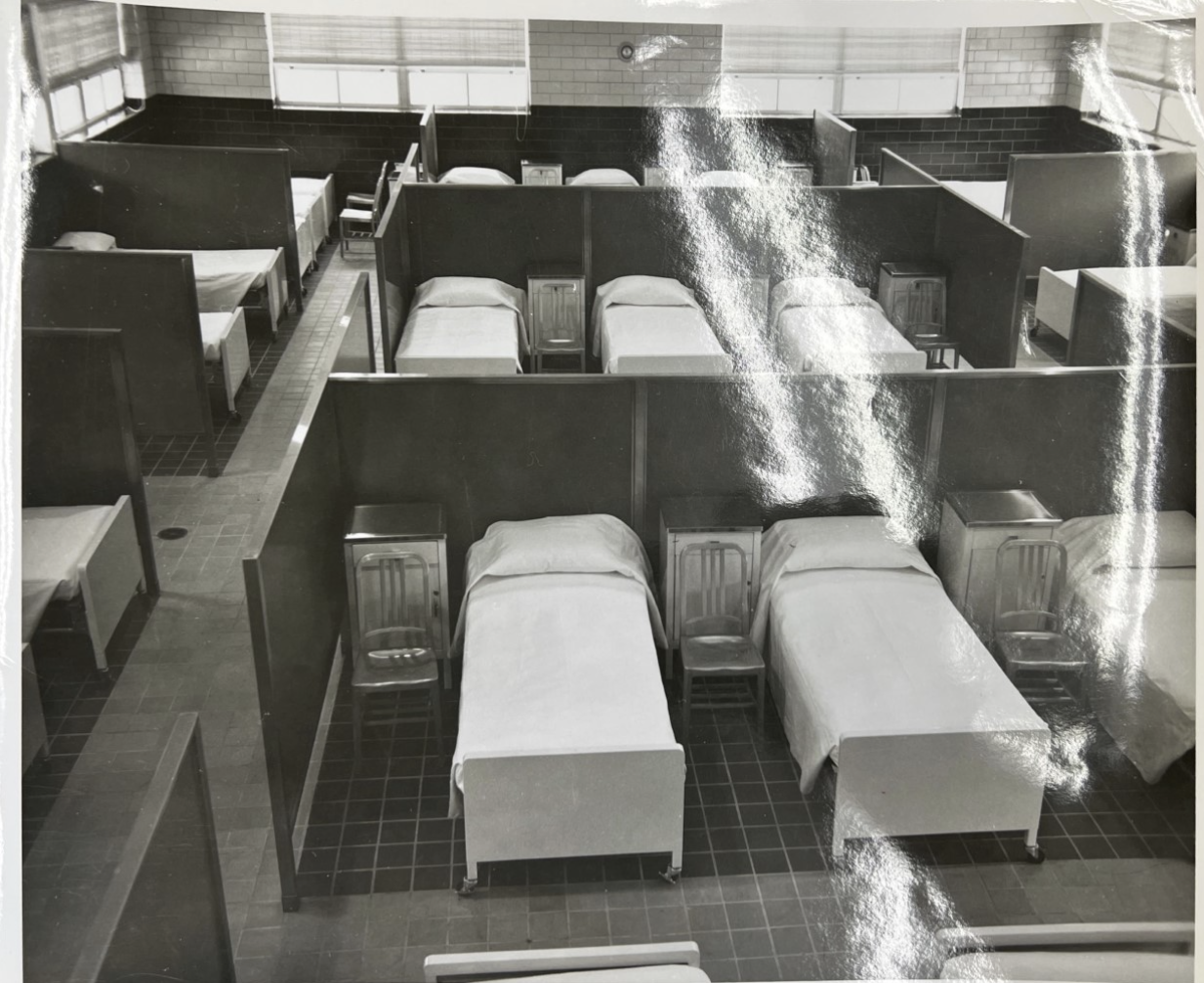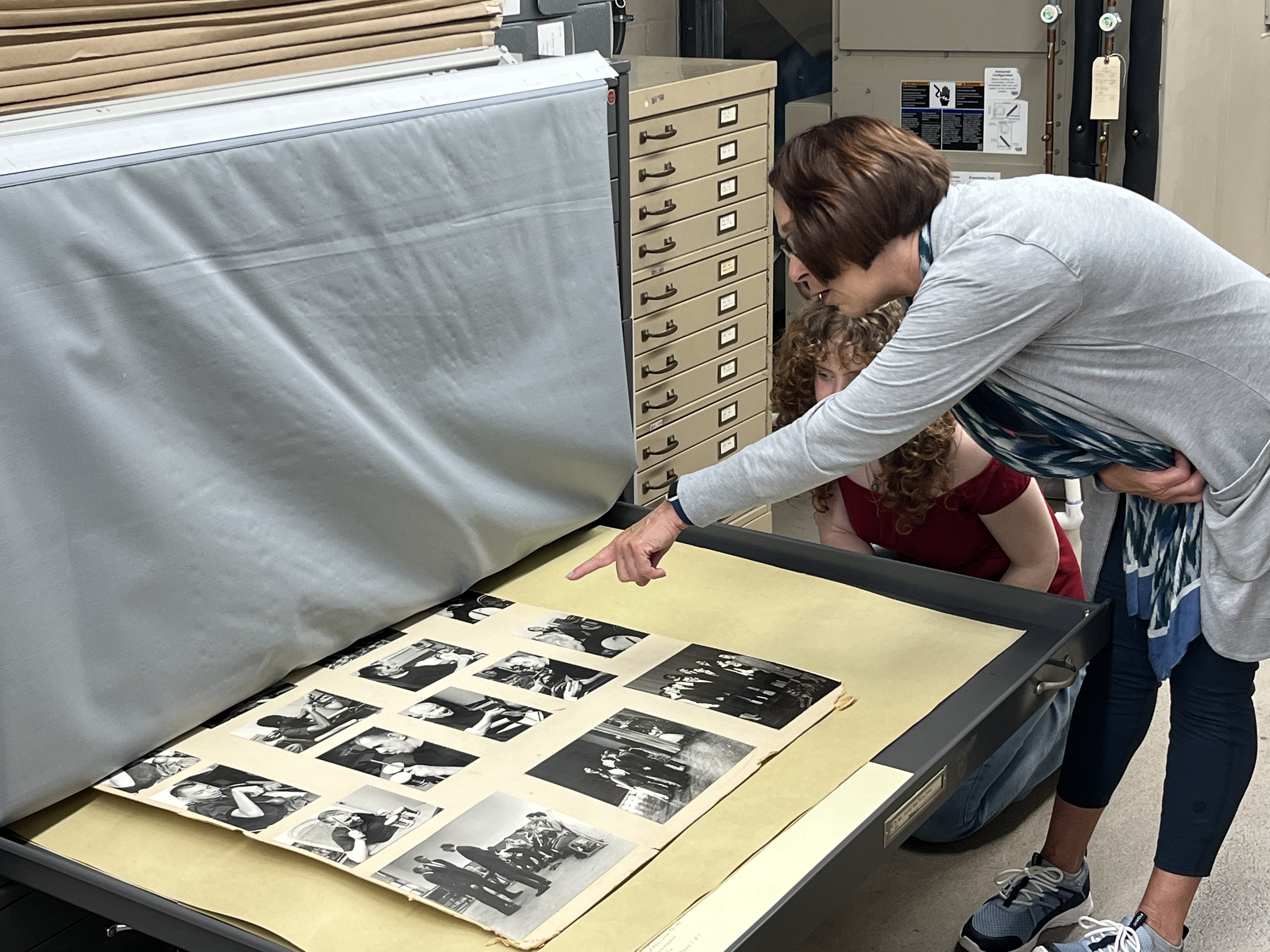Written by Jess Gallagher
October of 1967 marks a critical year in the alliance between Mansfield Training School (MTS) and the University of Connecticut (UConn). Dubbed as “A Salute to the University’s 50-year-old Partner,” President Homer Babbidge of the University of Connecticut gave an address at Mansfield’s 50th Anniversary Dinner expressing his gratitude for the University’s association with MTS.
While Babbidge’s work with MTS spanned only five years at this time, in his tribute he mentions the legacy of the “many pioneering leaders who launched this School and nursed it through its formative years” (“Bulletin on Training for Research in the Field of MR”). These leaders include one of the institution’s first physicians, Dr. LaMoure; former superintendent, Neil Dayton; and present-day leaders such as Governor John Dempsey and Superintendent Francis Kelley—whom he affectionately calls “Fran.”
Importantly ,Babbidge’s thoughts and praise for MTS greatly relied on the key connections between UConn’s research with residents from its Psychology, Education, Speech, Psychical Education, and Child Development departments/programs. With these UConn departments and research programs serving as the main catalyst for the relationship between the two institutions, Babbidge claims:
“If fact, they [the researchers] deserve accolades for their partnership they have developed between our two institutions—a partnership that may one day make this little community of Mansfield into one of the world’s greatest centers for the study and treatment—and yes, prayerfully, even for the prevention [of intellectual disabilities].”
Babbidge continues, recalling societal attitudes surrounding the topic of intellectual and developmental disability just a few years prior to his speech as being “locked behind the doors of late-Victorian propriety when those few who cared had to work with..in the dank atmosphere of ignorance and among the cobwebs of rejections” (“Bulletin on Training for Research in the Field of MR”). What is the most interesting piece of rhetoric here is the insinuation that within the walls of MTS residents still weren’t confined. Yet it’s clear that restraint logs, reports of abuse regarding the distribution of psychotropic medicine, and newspaper articles detailing the physical abuse that went on at MTS during the time of this speech and the years that followed were realities.
Babbidge’s choice of the words “community” and “partnership” from the quote above also prompts us to question how those within positions of power at MTS and outside of it viewed these ideals as a whole.
For Babbidge and many researchers within the field of science, medicine, and psychology, community/partnership goes hand-in-hand with study/treatment. We can assume, based on the context of the time, that ‘attitudes’ toward disability that Babbidge picks up on, and lack of leadership from disabled people on services related to disability due to ableism and disablism that ‘community’ was not fully designed for the true benefit of the residents at MTS. Community and partnership, instead, relied on the mutual gain of researchers and the institutions themselves whether it was financially, academically, or socially. Becoming the “greatest center for study and treatment” through an MTS-UConn partnership would not only boost the elitism of UConn and its standing as a top-rank research institution for its scientific discoveries but attract the attention of other funders such as NIH for the research of faculty members.
“Community” at MTS relied heavily on the act of othering—an act heavily reliant on the power dynamics between administrators, staff members, researchers, and residents. In countless fields of research, people with disabilities are often seen as the “objects” of study by researchers. MTS residents would be dehumanized simply through their position in the eyes of researchers and some staffers.
Babbidge’s critique of the social attitudes of the time doesn’t stop there. Toward the end of his address to the many parents, scholars, administrators, and audience at this anniversary dinner—Babbidge paints an image of what life was like prior to the work of MTS-UConn and a resurgence of new “progressive” discussions surrounding disability.
“The deaf, the blind, the mentally ill, all suffered at the hands of a society that would rather lock up its problems in an institution than do something about them. And somehow we managed to break out of the darkness. Brave parents, long tortured by the ignorant slings and hostile arrows of society, brought their afflicted children—almost literally—out into the daylight. By the single simple act of acknowledging [disability] as a problem they “opened up the doors and let the sunshine in.”
This is a very triumphant narrative from Babbidge, but his language is especially interesting. Here, he moves to saying “we” within his speech, saying “we managed to break out of the darkness.” But who is this “we?”
In the next lines following this quoted material he’s specifically talking about the parents of residents from MTS and the wider collective of parents of disabled children and adults, not disabled people themselves—but this phrase becomes complicated when we realize Babbidge’s own experiences with disability. In a Hartford Courant article, “Babbidge Dies; Former UConn President Was Author, Collector,” William Cockerham writes, “Babbidge also had a handicap. When he was a child, he was looking out of a bedroom window at some older children playing ball when the ball came through the glass, destroying the vision in his left eye.” How does Babbidge’s relationship to disability work with his status as University President? And most especially, in his connection to the Mansfield Training School during these years – where some residents were also identified as “blind” along with “mentally defective.”
There have yet to be any specific narratives from Babbidge himself discussing his relationship to disability, but historically, Babbidge was a key figure in Deaf history and “The Babbidge Report” to Congress on the “dismal failure” of oralism. In an article from Gallaudet Press, the findings of the Babbidge report “coupled with the Vocational Education Act Amendments of vocational rehabilitation funding of postsecondary deaf and hard of hearing students during the 1960s, Section 504 of the Rehabilitation Act of 1973 (equal access to communication, interpreter training), PL 94-142 (Education for All Handicapped Children Act of 1975), and now the Individuals with Disabilities Education Act of 1990 (IDEA) all contributed to the expanded changes in educational options for deaf and hard of hearing youngsters of public school age.”
With such a large role in both Deaf history and in the history at MTS—Babbidge’s position as being both frustrated and angered by society’s current treatment of people with disabilities makes sense. For him, and many other parents at MTS, the institution itself was viewed as “progressive,” yet, still continued to use deficit-based language and curative models when addressing disability, in practice, conversations, public relations, etc.
While parent advocacy played an important role in advocacy, the image offered by Babbidge of these parents being tortured by society’s ideals contributes to language that we see as being harmful today that de-centers disabled people in advocacy movements. Babbidge continues this thread by saying:
“The dark days of ignorance and indifference are behind us; we have moved out of backward old fashioned institutionalization into the mainstream of community life. We have public support. We have enlightened vigorous leadership. We have a University nearby that wants to help. All systems are go.“
The cycle of institutionalization continues to persist through mass incarceration, “smaller” institutions, and many other ‘fixes’ that have been used to address institutionalization of the 20th century. The days of ignorance have never truly been behind us; it’s still currently with us, and in front of us. As medical, social, policy, governmental, political, justice, and rights-based conversations surrounding disability continue to change, shift, grow, and develop–we are bound to see even earlier versions of advocacy and the language we grow as “outdated.” Understanding this history, in turn, can help better inform our present, and engage us with new models, ideas, and narratives for the future.




